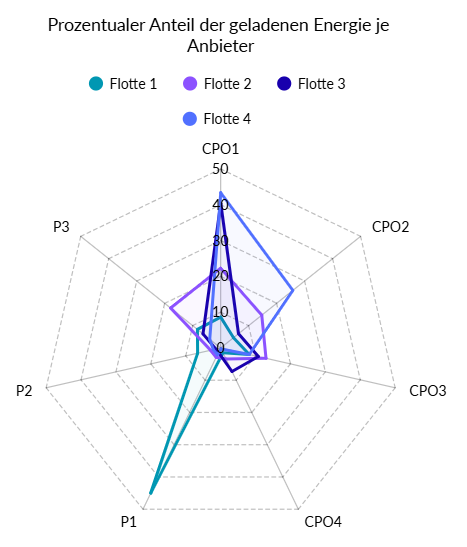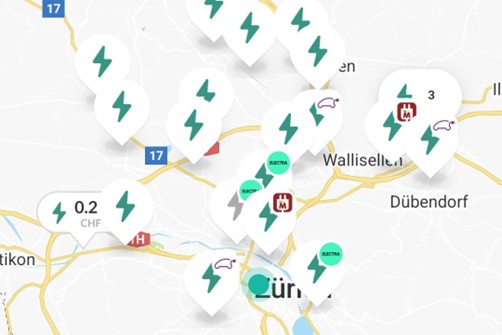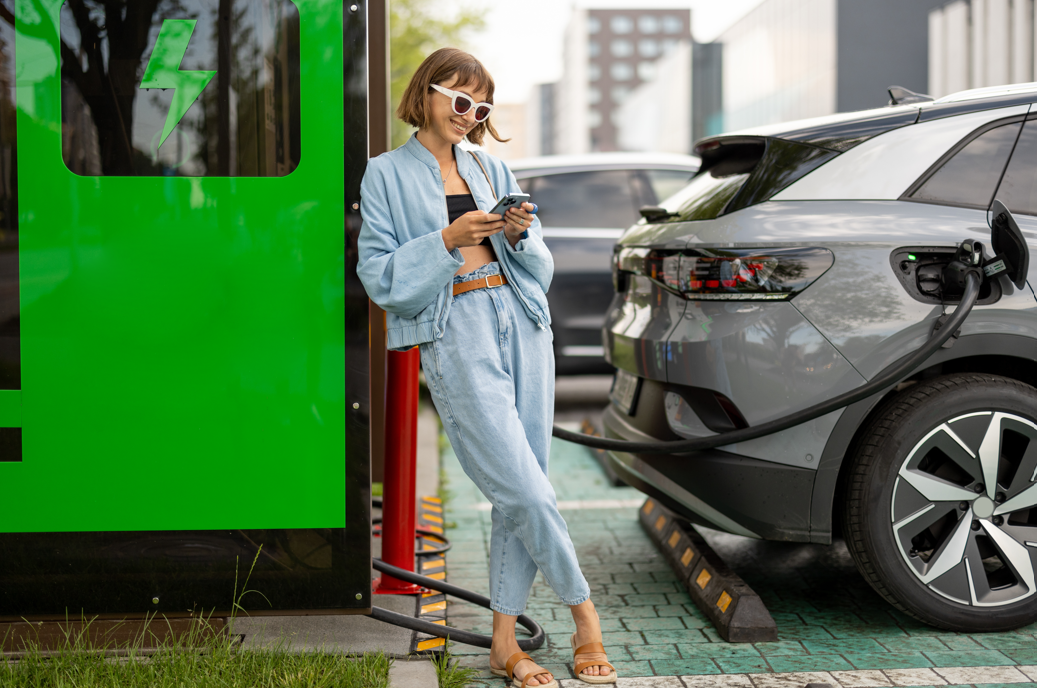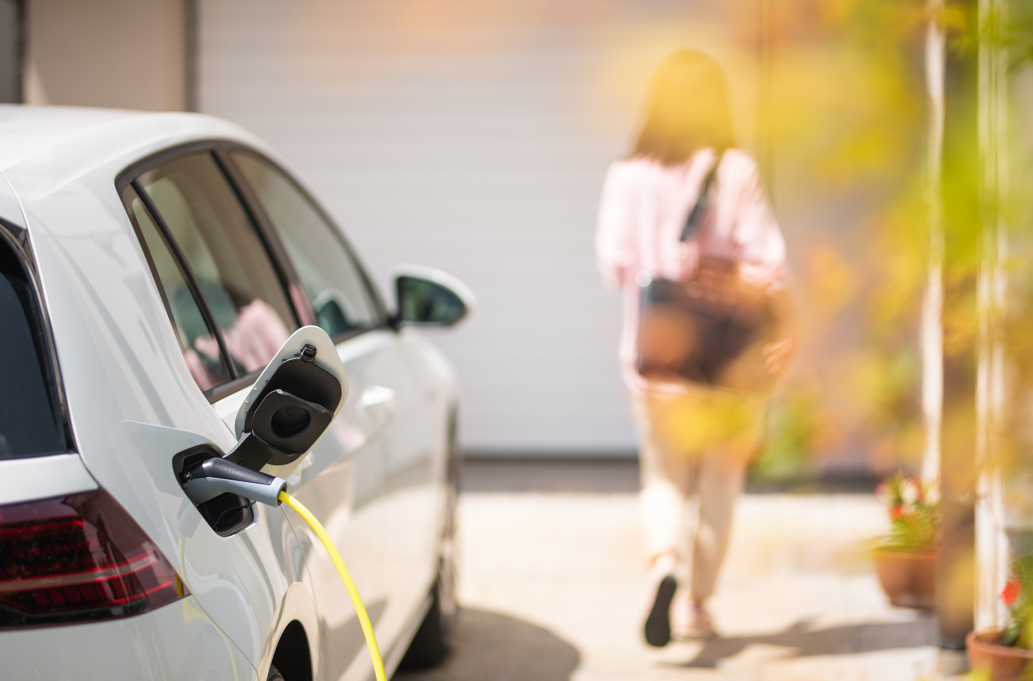Anyone traveling with an e-car today and wants to charge at a public charging station knows the feeling: You pull out your mobile phone, scroll through various apps, compare tariffs. Nevertheless, in the end, you have the feeling that you actually need law school and a calculator to charge your car. Welcome to the public store app jungle!
CPO, EMP - who is actually doing what here?
Sounds like abbreviation bingo for now, but it's important:
.png)
In addition to planning and constructing the stations, CPOs are also responsible for smooth operation and regular maintenance. CPOs decide who can use the charging stations how, when and under what conditions.
An EMP not only ensures the billing of charging processes, but also the expansion and maintenance of a user-friendly charging network. Using an app with map and status display, drivers can find free CPO charging points and conveniently start charging digitally.
Between many EMPs and CPOs, there is a marketplace, such as Hubject or Girève, as a central roaming platform. These bundle charging points from different CPOs so that EMPs can offer their customers the broadest possible network.
Where it gets complicated...
What sounds like a simple system is much more complex in practice:
- Not every EMP has access to all CPOs.
- Some CPOs also act as EMPs and can therefore prefer their own stations. Some CPOs only release individual charging stations in their own EMP app.
- Some EMPs are connected directly to individual CPOs, but run via the marketplace. There are additional transaction costs when roaming via a marketplace, but not with direct connections. This mix of direct connectivity and platform roaming has a direct impact on the final prices for drivers.
So far, so good and what exactly does that have to do with the prices for charging stations?
Why does the same electricity cost differently
A small, fictitious example: Imagine you buy a drink in a supermarket. At Supermarkt A, the drink costs 1.50 CHF, at supermarket B it costs 2.40 CHF. Same content, different price. That's exactly how it works when charging, because:
- CPOs may give EMPs different purchase prices.
- Some CPOs prefer their own app and make life difficult for third-party providers.
- There are also mixed models where you can charge cheaply with one app at a charging station and expensive with another app.
- And some EMPs are trying to set up a uniform pricing model — which makes the comparison even more difficult for end customers.
- There is also the issue of fair use fees: In theory, every EMP and CPO can set their own pricing rules. Some players actively exploit this, for example by displaying a low kWh price, but at the same time charging parking or parking fees. This makes the actual costs difficult for users to understand
The result? A price salad that end users have to scoop up at the end.
Do I need one app or ten?
Many drivers now have several charging apps on their mobile phones — one for slow charging stations in shopping centers, one for fast charging stations next to the motorway, one for emergencies. However, this not only makes charging more confusing, but also more stressful. After all, you just want to charge electricity instead of playing guesswork.
What reality shows
We compared our clients' transactions with rates from other EMPs who are also CPOs. These providers often attract customers to their own charging points with very attractive kWh prices, but charge significantly more for other CPOs in their app — thus disadvantaging third-party charging infrastructure.
For our customers, the picture is clear: With ChargeOn, you save an average of around 10% per month across all transactions. The entire load mix is decisive, not the individual price of a specific CPO.
Our calculation is based on a realistic mixed calculation of 7,500 charging processes via different providers: Sometimes we are a bit more expensive, sometimes cheaper. But the bottom line is that ChargeOn is clearly ahead, with full transparency.

The illustration below shows how the charging activities of different fleets are distributed among different providers: CPO1-CPO4 stands for charging point providers with whom we currently have no cooperation, P1-P3 for partner stations where our users can charge at preferential conditions. The different areas show different fleets and make it visible that each fleet has its own charging patterns. The more is charged at partner stations, the greater the savings potential.
But the price is only half the story. If you only use the ChargeOn app, you'll benefit from other benefits:
- All receipts in one app and in one portal: Put an end to the receipt craze.
- Statistics about your charging behavior: insight into your driving and charging behavior and smart tips for your car.
- Clear, transparent pricing structure: So that you can save even more money, we warn you before fair use fees apply.
- Save even more in the partner network: Our partners are clearly marked with icons in the app. Load more there to save more.

Our Approach: Simple, Fair, and Reliable
That is exactly where we come in:
• Convenience: Put an end to app chaos. With just one app, you have access to thousands of charging points in the city, on the motorway or abroad.
• Top price: Our prices are extremely competitive in the mix. Instead of having to deal with opaque tariffs or constantly looking for the cheapest app, we provide you with a fair and transparent price level. In the long run, it is often cheaper than it seems at first glance.
• Fairness through structure: As a pure EMP, we do not operate our own charging stations. As a result, we are independent and can negotiate better terms with many CPOs and thus expand our partner network. We pass on these benefits directly to our customers.
In the end, it's about this: You should charge your e-car and not strain your nerves.



